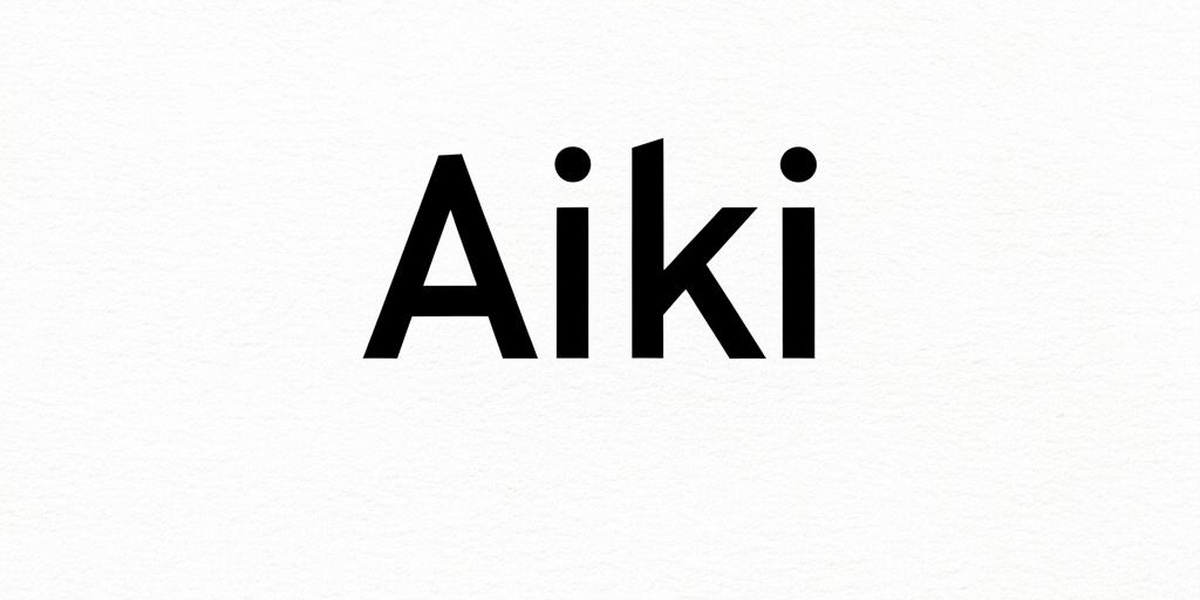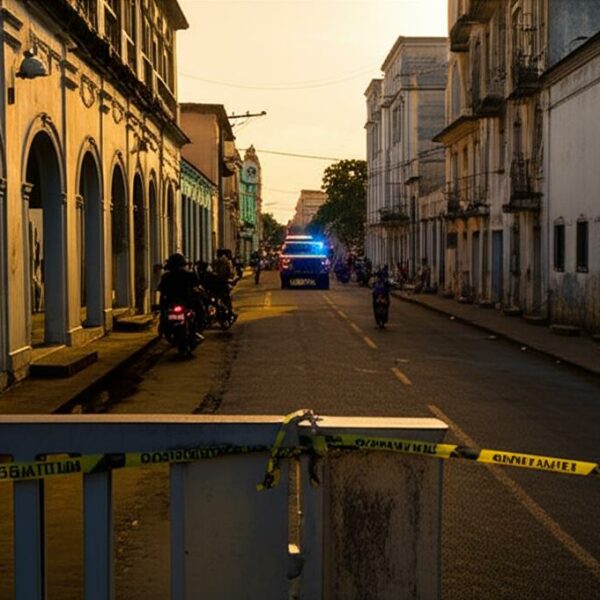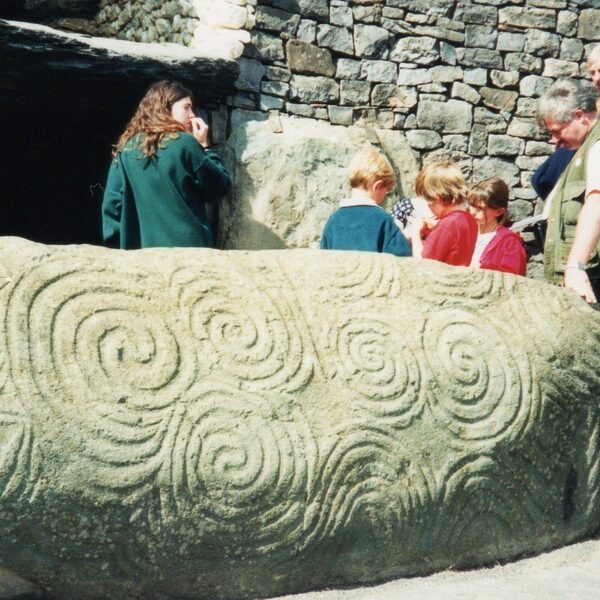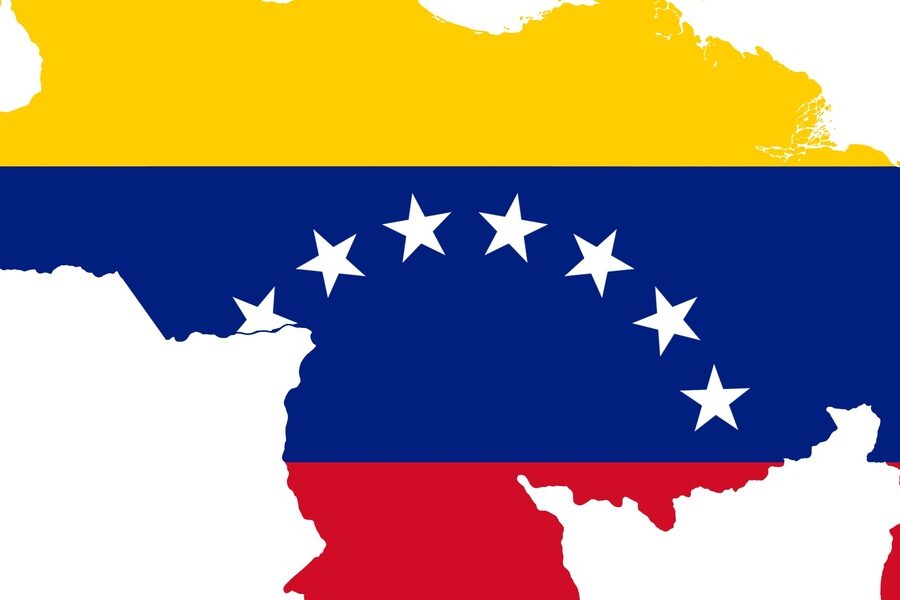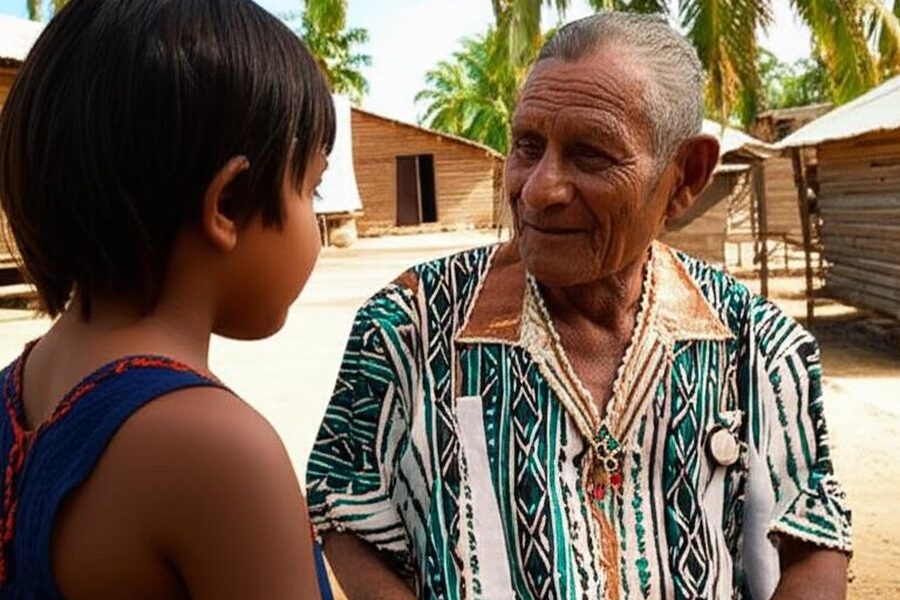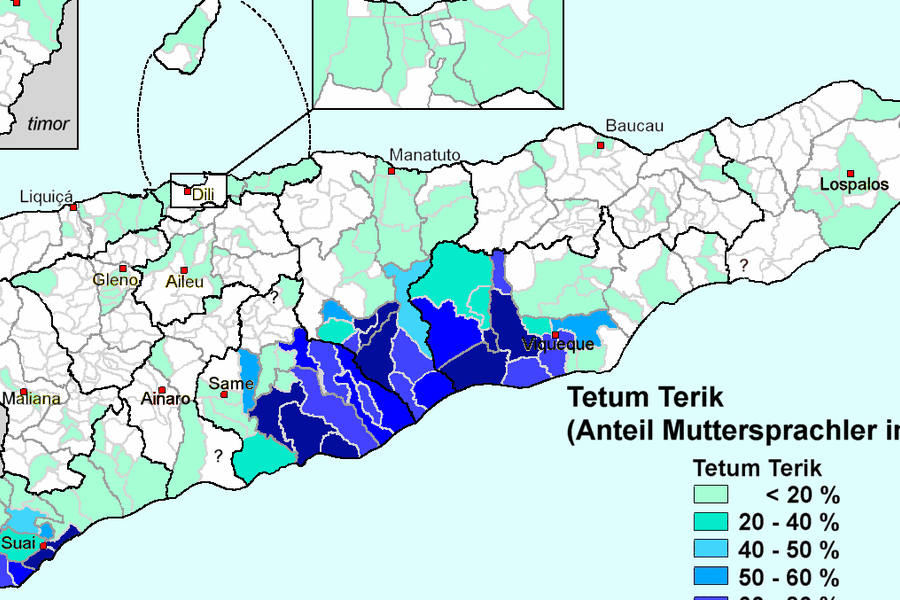Chad sits at the crossroads of the Sahara, Sahel and Central African regions, and its languages reflect that geographic and cultural mix. From market towns to remote villages, speech communities keep distinct vocabularies and traditions alive across provinces.
There are 88 Indigenous Languages in Chad, ranging from — to Wadai. Each entry is organized with Language family,Region/ethnic group,Speakers (approx) so you can quickly see classification, the associated community and rough population size — you’ll find these details below.
Which languages in Chad have the largest speaker populations?
A small number of languages account for a big share of speakers — for example varieties of Chadian Arabic and several Sara languages — while most entries are spoken by much smaller communities. The list below shows the approximate speaker counts so you can compare sizes at a glance.
How reliable are the speaker estimates and classifications?
Estimates come from a mix of censuses, surveys and linguistic research and should be treated as approximations; some figures are dated and classifications can change with new studies. Use the table below as a starting point and consult recent fieldwork or national statistics for the latest updates.
Indigenous Languages in Chad
| Name | Language family | Region/ethnic group | Speakers (approx) |
|---|---|---|---|
| — | — | — | — |
| Aiki | Nilo-Saharan (Maban) | Salamat Region, near Am Timan | 5,500 |
| Amdo | Afro-Asiatic (Chadic) | Salamat Region | 6,000 |
| Assangori | Nilo-Saharan (Saharan) | Ouaddaï Region, Biltine Department | 38,000 |
| Bagirmi | Nilo-Saharan (Central Sudanic) | Chari-Baguirmi Region | 55,000 |
| Barayin | Afro-Asiatic (Chadic) | Guéra Region, east of Melfi | 6,000 |
| Bedoanas | Afro-Asiatic (Chadic) | Tandjilé Region | 1,200 |
| Beria | Nilo-Saharan (Saharan) | Ennedi, Wadi Fira Regions | 140,000 |
| Besme | Niger-Congo (Adamawa) | Logone Oriental Region | 1,300 |
| Bidiyo | Afro-Asiatic (Chadic) | Guéra Region, east of Melfi | 22,000 |
| Bilala | Nilo-Saharan (Central Sudanic) | Batha Region, around Lake Fitri | 137,000 |
| Birgit | Afro-Asiatic (Chadic) | Salamat Region | 10,000 |
| Boor | Niger-Congo (Adamawa) | Moyen-Chari Region | 100 |
| Buduma | Afro-Asiatic (Chadic) | Lac Region, Lake Chad islands | 58,000 |
| Buso | Afro-Asiatic (Chadic) | Chari-Baguirmi and Tandjilé Regions | 40 |
| Chadian Arabic | Afro-Asiatic (Semitic) | Widespread, national lingua franca | 1,600,000 |
| Dangaleat | Afro-Asiatic (Chadic) | Guéra Region, north of Mongo | 60,000 |
| Daza | Nilo-Saharan (Saharan) | Borkou, Ennedi, Tibesti (BET) Region | 530,000 |
| Day | Niger-Congo (Adamawa) | Mandoul and Logone Oriental Regions | 55,000 |
| Disa | Nilo-Saharan (Central Sudanic) | Batha Region | 4,000 |
| Fongoro | Nilo-Saharan (Central Sudanic) | Sila Region, near the Sudan border | 1,000 |
| Fulfulde | Niger-Congo (Atlantic) | Widespread, primarily in the Sahelian belt | 260,000 |
| Fur | Nilo-Saharan (Furan) | Sila Region, near Sudan border | 20,000 |
| Gabri | Afro-Asiatic (Chadic) | Tandjilé Region | 35,000 |
| Gadang | Niger-Congo (Adamawa) | Moyen-Chari Region | 2,500 |
| Gidar | Afro-Asiatic (Chadic) | Chari-Baguirmi Region, near Cameroon border | 65,000 |
| Gula | Nilo-Saharan (Central Sudanic) | Salamat Region, near Lake Iro | 19,000 |
| Gulay | Nilo-Saharan (Central Sudanic) | Logone Oriental Region | 250,000 |
| Herde | Afro-Asiatic (Chadic) | Mayo-Kebbi Est Region | 45,000 |
| Jegu | Afro-Asiatic (Chadic) | Guéra Region | 2,500 |
| Jongor | Afro-Asiatic (Chadic) | Salamat and Guéra Regions | 30,000 |
| Kaba | Nilo-Saharan (Central Sudanic) | Logone Oriental and Tandjilé Regions | 120,000 |
| Kajakse | Afro-Asiatic (Chadic) | Salamat Region | 10,000 |
| Kanembu | Nilo-Saharan (Saharan) | Lac and Kanem Regions | 650,000 |
| Karang | Niger-Congo (Mbum) | Mayo-Kebbi Est Region | 25,000 |
| Kenga | Nilo-Saharan (Central Sudanic) | Guéra Region, near Bitkine | 60,000 |
| Kera | Afro-Asiatic (Chadic) | Mayo-Kebbi Est Region | 65,000 |
| Kibet | Nilo-Saharan (Maban) | Ouaddaï and Salamat Regions | 25,000 |
| Kim | Niger-Congo (Mbum) | Tandjilé Region | 15,000 |
| Kimre | Afro-Asiatic (Chadic) | Tandjilé Region | 20,000 |
| Kujargé | Afro-Asiatic (Unclassified) | Sila and Ouaddaï Regions | 1,000 |
| Kulfa | Nilo-Saharan (Central Sudanic) | Mandoul Region | 2,500 |
| Kuo | Niger-Congo (Adamawa) | Logone Oriental Region | 10,000 |
| Kuri | Afro-Asiatic (Chadic) | Lac Region, Lake Chad islands | 4,000 |
| Laal | Language Isolate | Moyen-Chari Region | 750 |
| Lagwan | Afro-Asiatic (Chadic) | Far North Region, on Logone River | 20,000 |
| Lele | Afro-Asiatic (Chadic) | Tandjilé Region | 45,000 |
| Lutos | Nilo-Saharan (Central Sudanic) | Moyen-Chari and Mandoul Regions | 2,000 |
| Maba | Nilo-Saharan (Maban) | Ouaddaï and Wadi Fira Regions | 320,000 |
| Majera | Afro-Asiatic (Chadic) | Mayo-Kebbi Est Region | 500 |
| Malgbe | Afro-Asiatic (Chadic) | Chari-Baguirmi Region, near Cameroon border | 7,000 |
| Mararit | Nilo-Saharan (Taman) | Sila and Ouaddaï Regions | 60,000 |
| Masa | Afro-Asiatic (Chadic) | Mayo-Kebbi Est Region | 230,000 |
| Masalit | Nilo-Saharan (Maban) | Sila and Ouaddaï Regions | 65,000 |
| Masmaje | Afro-Asiatic (Chadic) | Batha Region | 25,000 |
| Mawa | Afro-Asiatic (Chadic) | Guéra Region | 4,500 |
| Mbay | Nilo-Saharan (Central Sudanic) | Logone Oriental and Mandoul Regions | 110,000 |
| Medogo | Nilo-Saharan (Central Sudanic) | Guéra Region | 23,000 |
| Mesme | Afro-Asiatic (Chadic) | Tandjilé Region | 20,000 |
| Migaama | Afro-Asiatic (Chadic) | Guéra Region, near Mongo | 40,000 |
| Mimi | Nilo-Saharan (Maban) | Batha and Ouaddaï Regions | 5,000 |
| Mire | Afro-Asiatic (Chadic) | Tandjilé Region | 1,500 |
| Mobu | Afro-Asiatic (Chadic) | Guéra Region | 1,200 |
| Mogum | Afro-Asiatic (Chadic) | Guéra Region | 8,000 |
| Mongo | Nilo-Saharan (Central Sudanic) | Mandoul and Moyen-Chari Regions | 75,000 |
| Mpade | Afro-Asiatic (Chadic) | Far North, near Lake Chad | 12,000 |
| Mubi | Afro-Asiatic (Chadic) | Guéra Region | 45,000 |
| Musey | Afro-Asiatic (Chadic) | Mayo-Kebbi Est Region | 230,000 |
| Musgu | Afro-Asiatic (Chadic) | Chari-Baguirmi Region | 30,000 |
| Naba | Nilo-Saharan (Central Sudanic) | Batha Region | 280,000 |
| Nancere | Afro-Asiatic (Chadic) | Tandjilé and Logone Oriental Regions | 90,000 |
| Ngam | Niger-Congo (Adamawa) | Moyen-Chari Region | 45,000 |
| Ngambay | Nilo-Saharan (Central Sudanic) | Logone Occidental, Logone Oriental Regions | 1,100,000 |
| Ngeté | Afro-Asiatic (Chadic) | Tandjilé Region | 10,000 |
| Pana | Niger-Congo (Mbum) | Mayo-Kebbi Ouest Region | 90,000 |
| Pévé | Afro-Asiatic (Chadic) | Mayo-Kebbi Ouest Region | 40,000 |
| Saba | Afro-Asiatic (Chadic) | Guéra Region | 1,500 |
| Sango | Creole (Ngbandi-based) | Logone Oriental, urban centers | 5,000 |
| Sar | Nilo-Saharan (Central Sudanic) | Moyen-Chari Region | 220,000 |
| Sokoro | Afro-Asiatic (Chadic) | Guéra Region, near Melfi | 6,000 |
| Somrai | Afro-Asiatic (Chadic) | Tandjilé Region | 7,500 |
| Surbakhal | Nilo-Saharan (Maban) | Sila Region | 7,000 |
| Tama | Nilo-Saharan (Taman) | Wadi Fira Region | 80,000 |
| Teda | Nilo-Saharan (Saharan) | Tibesti Region, Borkou, Ennedi | 65,000 |
| Toram | Afro-Asiatic (Chadic) | Salamat Region | 8,500 |
| Tupuri | Niger-Congo (Mbum) | Mayo-Kebbi Est Region | 130,000 |
| Ubi | Afro-Asiatic (Chadic) | Guéra Region | 1,100 |
| Wadai | Afro-Asiatic (Chadic) | Ouaddaï Region | 1,500 |
Images and Descriptions

—
—
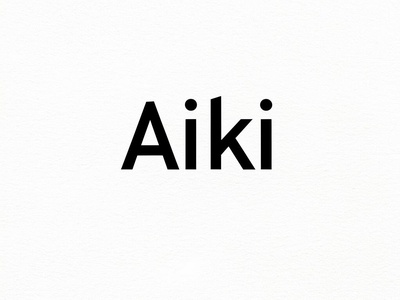
Aiki
Also known as Runga. It is part of a dialect continuum with Kibet in Chad and is closely related to Aiki spoken in the Central African Republic. Vigorous in its core area. ISO: `aiki`

Amdo
A lesser-known East Chadic language spoken in a small area. It faces pressure from larger regional languages like Chadian Arabic, which affects its long-term vitality among younger speakers. ISO: `amc`
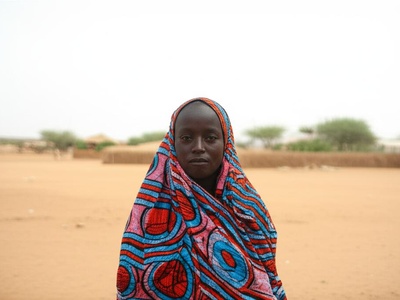
Assangori
Also known as Sungor. It is spoken by the Assangori people and is linguistically related to Beria (Zaghawa). The community maintains its language in daily use, ensuring its vitality. ISO: `sjg`
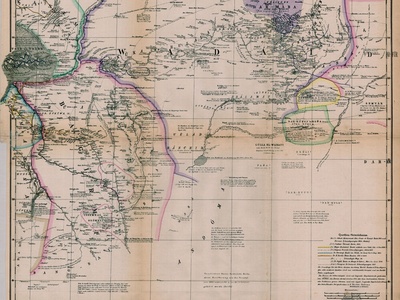
Bagirmi
The historical language of the Baguirmi Kingdom. While still actively used, many younger speakers are shifting to Chadian Arabic, particularly in urban areas, putting the language under pressure. ISO: `bmi`
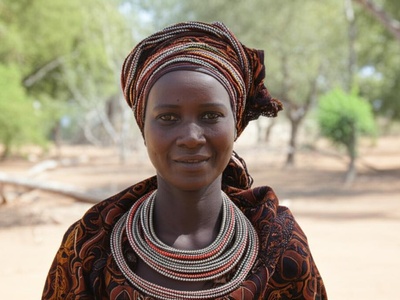
Barayin
An East Chadic language spoken by the Barayin people. It remains the primary language for community interaction and is considered vigorous, though it is not used in formal education. ISO: `bva`

Bedoanas
A little-documented East Chadic language. With a small speaker population surrounded by larger language groups, it is considered endangered and at risk of disappearing within a few generations. ISO: `biod`

Beria
Also known as Zaghawa. Spoken by the Zaghawa people across the Chad-Sudan border. It has a unique alphabetic script based on livestock brands, developed in the 20th century. ISO: `zag`
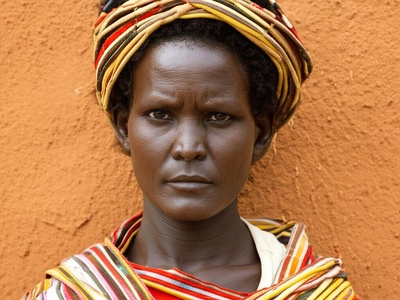
Besme
An endangered Adamawa language. Spoken in just a few villages, its speaker base is small and aging, facing intense pressure from the larger Ngambay language and Chadian Arabic. ISO: `bes`
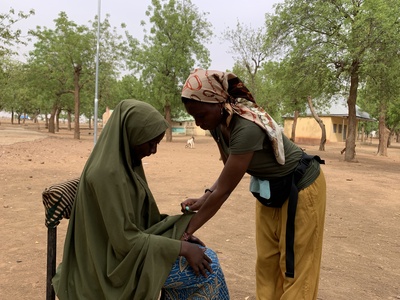
Bidiyo
An East Chadic language with a strong oral tradition. Most speakers are monolingual in Bidiyo, which helps maintain its vitality despite the prevalence of Chadian Arabic in the wider region. ISO: `bid`

Bilala
Spoken by the Bilala people, descendants of the historic Yao Sultanate. The language is vigorous and serves as a key marker of cultural identity for its community. ISO: `bkc`

Birgit
An East Chadic language spoken east of Abou Déïa. It is part of a cluster of related languages including Kajakse and Masmaje, and it remains the primary language of the community. ISO: `btf`
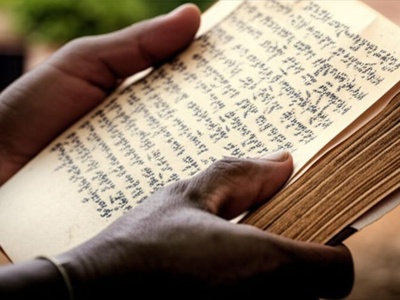
Boor
A critically endangered Adamawa language spoken in a single village. With very few elderly speakers remaining, it is on the brink of extinction, threatened by the dominant Sar language. ISO: `bvf`
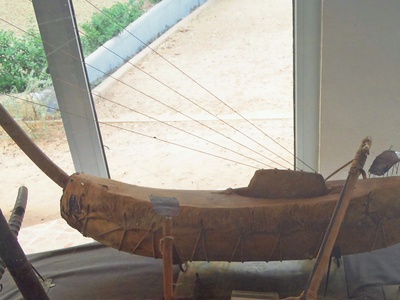
Buduma
Also known as Yedina. Spoken by the Buduma people, who are traditionally fishers and pastoralists on the islands of Lake Chad. The language is vigorous within its community. ISO: `bdm`
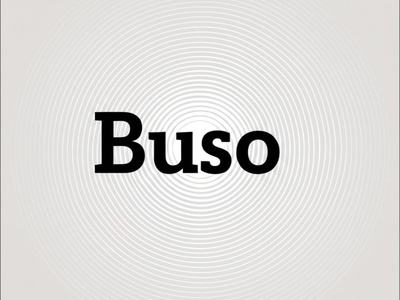
Buso
A moribund East Chadic language with only a handful of elderly speakers left. It is no longer being passed on to children, who speak the neighboring Musey language instead. ISO: `bso`
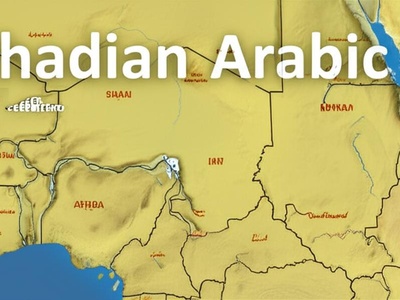
Chadian Arabic
A unique Arabic dialect indigenous to Chad, serving as the country’s primary lingua franca. It incorporates vocabulary from French and local African languages, making it distinct from other Arabic varieties. ISO: `shu`
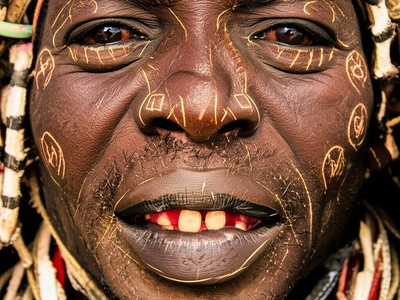
Dangaleat
An East Chadic language spoken by the Dangaleat people. It is known for its complex tonal system, which plays a crucial role in distinguishing meaning between words. The language is stable. ISO: `daa`
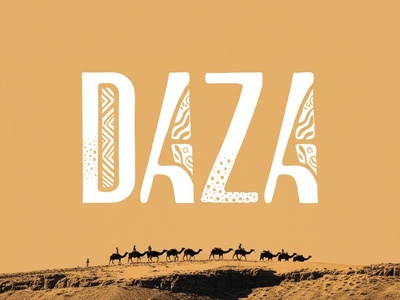
Daza
Spoken by the Daza (Gorane) people, who are traditionally nomadic pastoralists in the Sahara. It is a major language of northern Chad and is considered vigorous and essential to Daza identity. ISO: `dzd`

Day
An Adamawa language spoken in the south. While still widely used, it is losing ground to Sar and Ngambay, especially among the youth in multilingual areas. ISO: `dai`
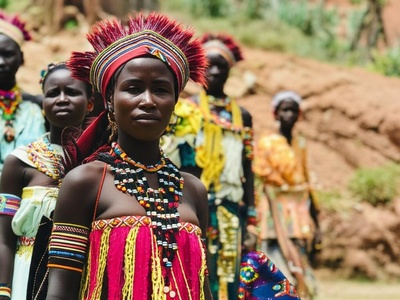
Disa
A Sara-Baguirmi language spoken by the Disa people. It has a relatively small community of speakers but remains the primary means of communication for daily life and cultural practices. ISO: `dsi`
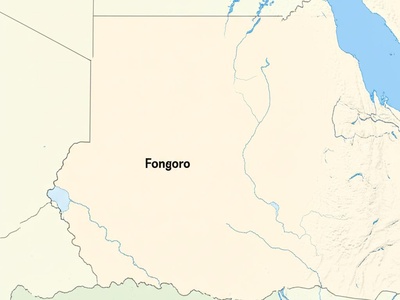
Fongoro
A critically endangered language spoken on both sides of the Chad-Sudan border. Most ethnic Fongoro now speak Fur or Chadian Arabic, and very few fluent speakers remain. ISO: `fgr`
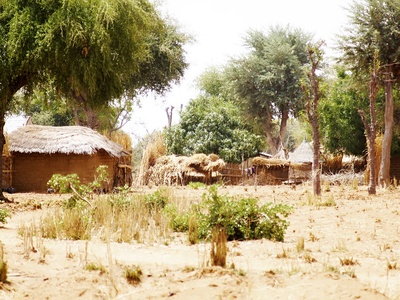
Fulfulde
The language of the Fulani (Peul) people. In Chad, it is spoken by pastoralist communities across the Sahelian zone. It plays a significant role in trade and cultural identity. ISO: `fuv`
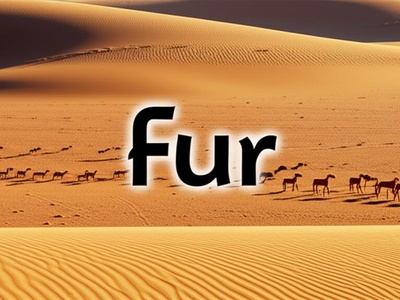
Fur
Primarily spoken in Darfur, Sudan, but has an established indigenous community in Chad. It is the language of the Fur people and is used in daily life, though it faces pressure from Arabic. ISO: `fvr`
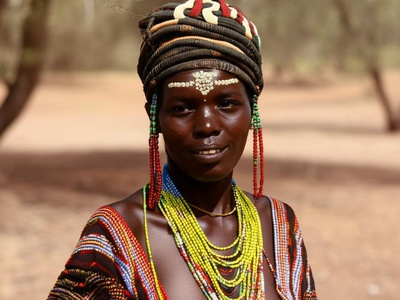
Gabri
An East Chadic language also known as Tobanga. It is one of several related languages in the region, including Kaba and Lele, and is vigorously spoken by its community. ISO: `gab`

Gadang
An Adamawa language closely related to Miltu and Sarua. The small speaker community is increasingly shifting to Bagirmi or Chadian Arabic, making the language highly endangered. ISO: `gdk`

Gidar
Also known as Gider or Guidar. While primarily spoken in Cameroon, it has a significant speaker community in Chad. The language is vigorous and used in all aspects of community life. ISO: `gid`
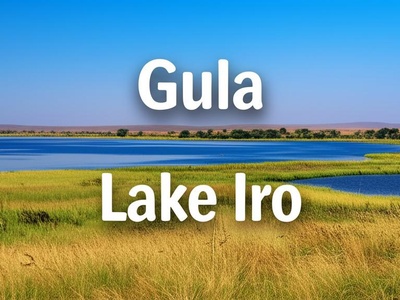
Gula
Spoken around Lake Iro by several Gula groups. It is a distinct language from the Adamawa Gula (Kara) language, with which it is often confused. It remains vital for local communication. ISO: `glu`
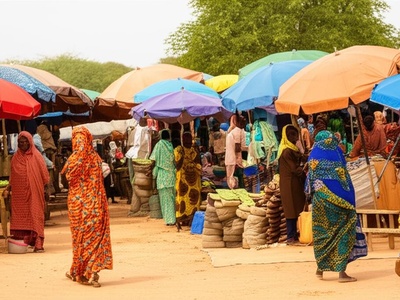
Gulay
One of the major Sara languages of southern Chad. It is a vigorous language used extensively in daily life, local markets, and churches, with some educational materials available. ISO: `gvl`
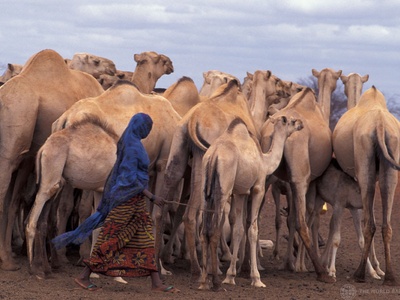
Herde
Part of the Masa language group, also known as Zime. It is spoken in the southwest near the Cameroon border and is mutually intelligible with other Zime varieties like Pévé. ISO: `zme`

Jegu
A lesser-known East Chadic language spoken in the mountains of the Guéra Region. It belongs to the Dangaleat cluster but is distinct enough to be considered its own language. ISO: `jge`

Jongor
Also known as Djongor. It is an East Chadic language that serves as the primary language for the Jongor ethnic group. It is considered stable but lacks official status or use in education. ISO: `jon`

Kaba
A major language cluster in southern Chad, often considered a dialect continuum. Kaba Deme and Kaba Na are its most prominent varieties and are vital for regional communication. ISO: `ksp`

Kajakse
An East Chadic language closely related to Birgit and Masmaje. It is spoken by a small community and remains the primary vehicle for their culture and daily communication. ISO: `ckq`
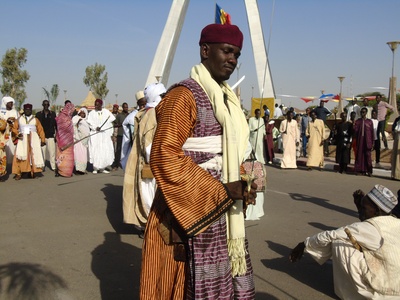
Kanembu
A major language of the Lake Chad basin, closely related to Kanuri. It is the language of the historic Kanem-Bornu Empire and remains a vigorous and influential language in the region. ISO: `kbl`
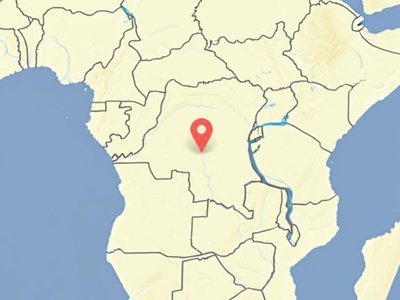
Karang
A Mbum language spoken on the Chad-Cameroon border. It is closely related to Pana and Tupuri and is used actively in daily life, though Chadian Arabic is used for wider communication. ISO: `kzr`

Kenga
Spoken by the Kenga people, who are historically known as skilled blacksmiths. The language is vigorous and central to the community’s identity, with a strong oral tradition. ISO: `kyq`
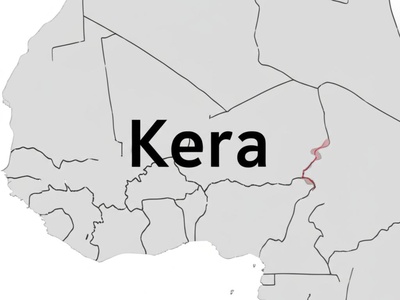
Kera
An East Chadic language spoken in southwestern Chad and across the border in Cameroon. The language is known for its ejective consonants, a feature not common in the region’s other languages. ISO: `ker`
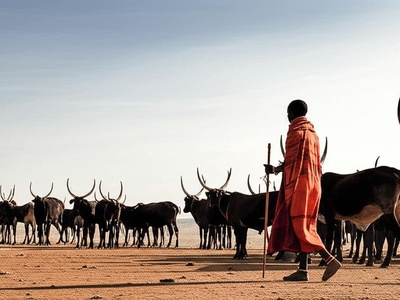
Kibet
A Maban language that forms a dialect continuum with Aiki. It is spoken by semi-nomadic communities and is considered a vigorous language essential for their pastoralist lifestyle. ISO: `kie`

Kim
A Mbum language cluster that includes the Garang, Ere, and Jumam varieties. Its speakers are shifting to other languages, making it endangered and in need of documentation. ISO: `kia`

Kimre
An East Chadic language spoken south of the Chari River. It is closely related to Lele and Gabri and is the primary language of the Kimré people, used in all domains of daily life. ISO: `kqp`

Kujargé
An unclassified and highly endangered language spoken by a semi-nomadic community. It shows features of both Chadic and Cushitic languages, making its genetic affiliation a linguistic puzzle. ISO: `vkj`
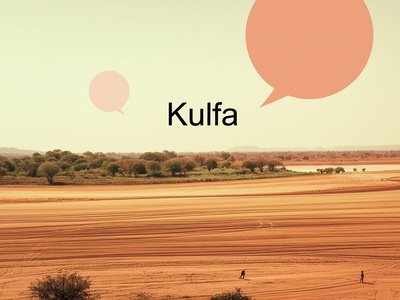
Kulfa
A Sara-Baguirmi language spoken in a small area south of the Chari River. With a small speaker base, it is vulnerable to pressure from larger neighboring languages like Sar. ISO: `kxj`

Kuo
An Adamawa language spoken in southwestern Chad. It is facing pressure from Ngambay, the dominant regional language, and is considered to be in a state of decline among younger generations. ISO: `xuo`
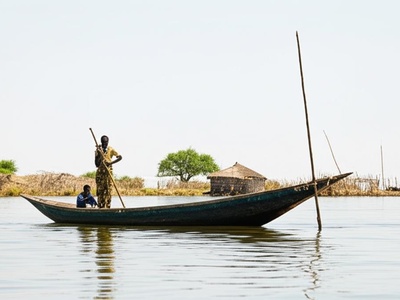
Kuri
A Chadic language spoken by a fishing community on the islands of Lake Chad. It is notable for being a heavily tonal language, a rare feature within the West Chadic branch. ISO: `kxh`

Laal
A critically endangered language isolate whose origins are unknown. Spoken in just two villages, it is a linguistic puzzle, containing vocabulary not found in any neighboring language families. ISO: `gdm`
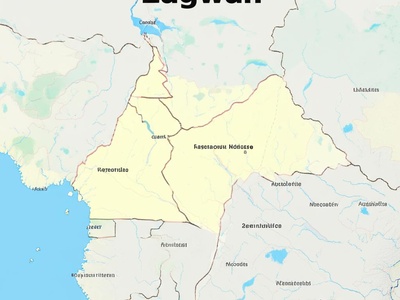
Lagwan
Also known as Kotoko-Logone. It is part of the Kotoko cluster of Chadic languages spoken along the Chad-Cameroon border. The language is vital for the local fishing communities. ISO: `kot`
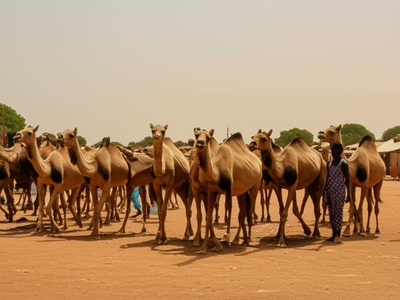
Lele
An East Chadic language spoken around the town of Kélo. It is not to be confused with the Lele language of the DRC. It is vigorous and serves as a local language of trade. ISO: `lln`

Lutos
Also known as Ruto. A Sara-Baguirmi language with a small and geographically concentrated speaker population. It is endangered due to the dominance of the larger Sar language. ISO: `ndy`
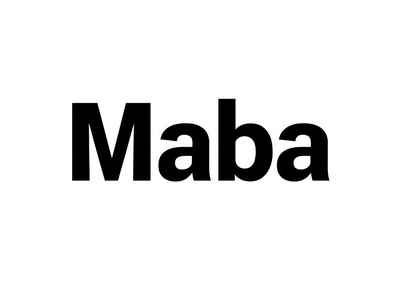
Maba
The language of the Maba people and the historic Ouaddai Empire. It is a major regional language in eastern Chad and remains vigorous, serving as a lingua franca in its home area. ISO: `mde`

Majera
A highly endangered Chadic language spoken in a single village on the border with Cameroon. Most ethnic Majera now speak Lagwan or Chadian Arabic, and its extinction is imminent. ISO: `xmj`
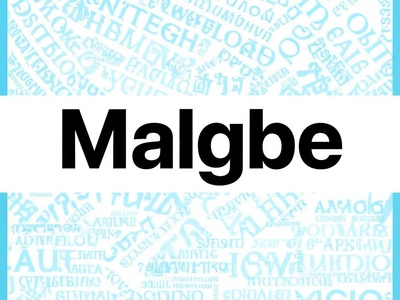
Malgbe
Part of the Kotoko language cluster spoken along the Chari River. It is closely related to other Kotoko varieties like Lagwan and is used primarily within the community. ISO: `mxf`

Mararit
Also known as Ebiri. A language of eastern Chad with two main dialects, Ibiri and Abu Charib. It is the primary language of the Mararit people and is considered stable. ISO: `mgb`
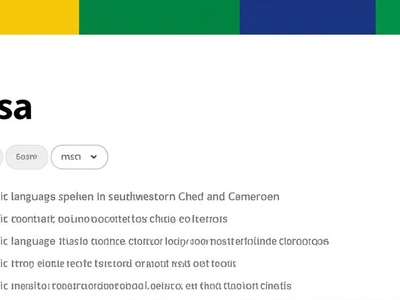
Masa
A major Chadic language spoken in southwestern Chad and Cameroon. It has a rich oral literature and is used in local churches and community radio, ensuring its continued vitality. ISO: `mcn`
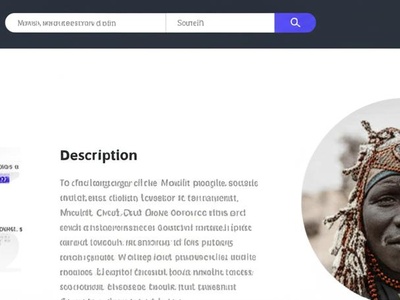
Masalit
The language of the Masalit people, spoken in eastern Chad and Darfur, Sudan. It has a complex grammatical system with nine noun cases. It is a vital part of Masalit identity. ISO: `mls`

Masmaje
An East Chadic language spoken west of Abou Deïa. It belongs to the same subgroup as Birgit and Kajakse and is the everyday language of the Masmaje community. ISO: `mes`

Mawa
Not to be confused with the Mawa of Nigeria. A poorly documented East Chadic language spoken in a small cluster of villages. It is endangered due to the influence of Chadian Arabic. ISO: `mwx`
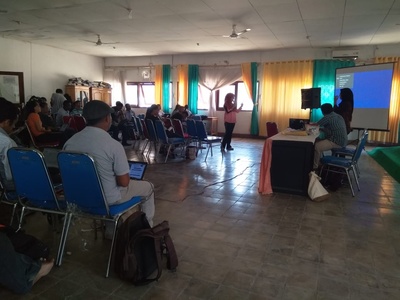
Mbay
One of the major Sara languages of southern Chad. Spoken around the town of Moïssala, it is a vigorous language used in all domains of life, including local education and media. ISO: `myb`

Medogo
Also known as Miltu. A Sara-Baguirmi language spoken west of Sarh. It is used daily by its community but faces pressure from the larger Sar language in the broader region. ISO: `mlj`
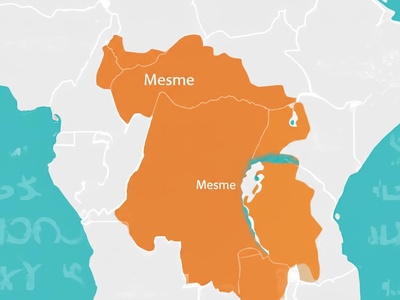
Mesme
A West Chadic language spoken in a pocket surrounded by East Chadic and Adamawa languages, making its presence a point of historical linguistic interest. It is vigorously spoken. ISO: `zim`

Migaama
An East Chadic language with two main dialects, Migaama and Doga. It is the primary means of communication for the community and is considered stable and vigorous. ISO: `mmy`

Mimi
A Maban language whose classification was once debated. It is spoken in a few villages and is endangered, with many speakers shifting to Chadian Arabic or Maba. ISO: `miv`

Mire
An endangered East Chadic language spoken in a small area. The community is largely bilingual in Kimre, and the use of Mire is declining rapidly among younger generations. ISO: `mvh`

Mobu
An East Chadic language spoken in a handful of villages. With a very small population and strong pressure from Chadian Arabic, it is considered highly endangered. ISO: `mod`
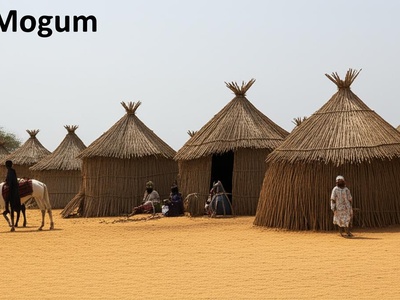
Mogum
An East Chadic language with several dialects. It is part of the Dangaleat cluster but is distinct. The language is the primary means of communication within the community. ISO: `mou`
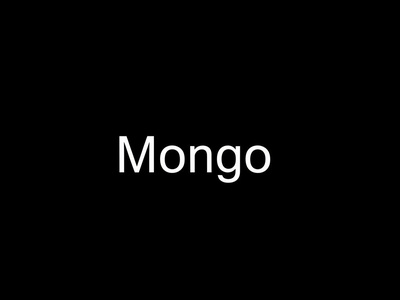
Mongo
One of the constituent languages of the Sara cluster. It is spoken by the Sara-Mongo people and is a vigorous language, though often overshadowed by its larger neighbor, Sar. ISO: `mby`
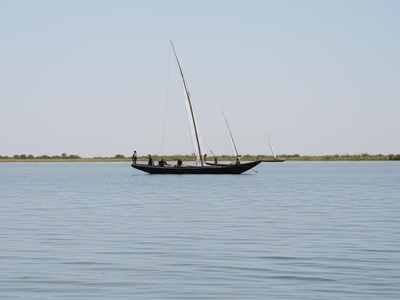
Mpade
Part of the Kotoko language group spoken along the Chad-Cameroon border. Its speakers are traditionally fishermen, and the language is central to their cultural heritage. ISO: `mpi`
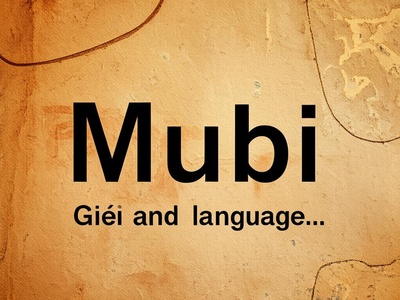
Mubi
An East Chadic language spoken in the Guéra Massif. It is part of a dialect cluster that includes Birgit and Toram and is the most widely spoken language in that group. ISO: `mub`
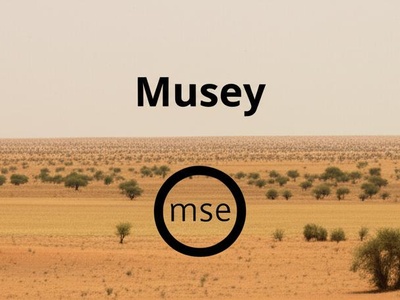
Musey
A major language of the Masa group, spoken in southwestern Chad. It is a vigorous language with a high rate of monolingualism, used in all aspects of community life. ISO: `mse`
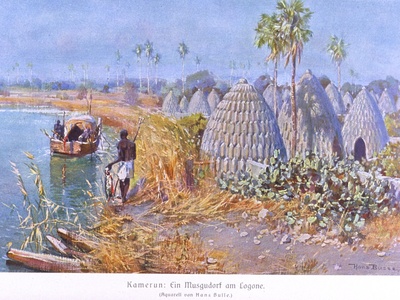
Musgu
Also known as Pouss. A Chadic language spoken along the Logone River. It is known for its labiodental flap, a rare sound found in only a few languages worldwide. ISO: `mug`
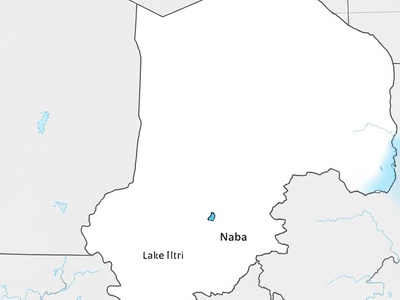
Naba
A language cluster that includes Bilala, Kuka, and Medogo. Spoken around Lake Fitri, it is the modern descendant of the language of the ancient Sultanate of Yao. ISO: `mne`
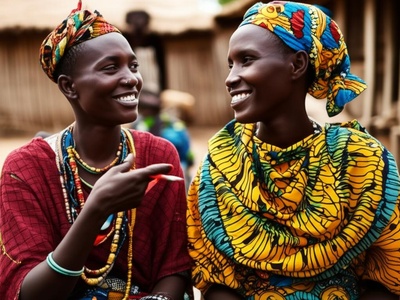
Nancere
An East Chadic language also known as Nanjere. It is a vigorous language with a strong speaker base and is used as a local trade language in the areas where it is spoken. ISO: `nnc`
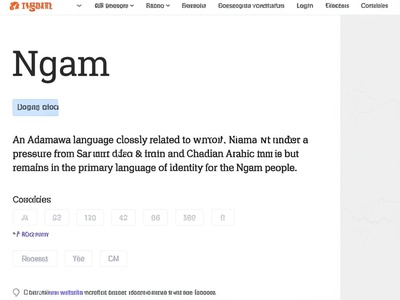
Ngam
An Adamawa language closely related to Kuo. It is under pressure from Sar and Chadian Arabic, but it remains the primary language of identity for the Ngam people. ISO: `nmc`
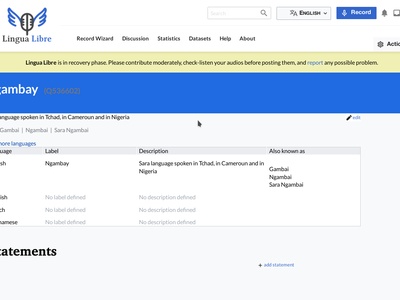
Ngambay
The largest of the Sara languages and a major regional lingua franca in southern Chad. It is used in education, radio broadcasting, and commerce, making it a very vigorous language. ISO: `sba`
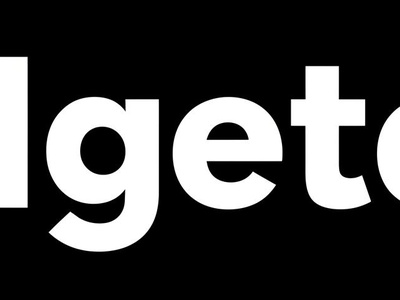
Ngeté
An East Chadic language also known as Ngete-Herdé. It is part of the Zime dialect cluster and is used daily by its community, although it is not used in formal domains. ISO: `nne`

Pana
A Mbum language spoken on both sides of the Chad-Cameroon border. It is a vigorous language, serving as the main vehicle of communication for its agricultural community. ISO: `pnz`

Pévé
Part of the Masa language group, also known as Lamé. It is spoken in southwestern Chad and across the border in Cameroon. The language has a vibrant tradition of oral storytelling. ISO: `lme`

Saba
A critically endangered East Chadic language spoken in a few villages. Most speakers are elderly, and the community is shifting to the larger and more prestigious Chadian Arabic. ISO: `sae`
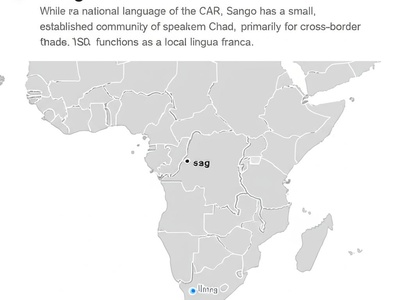
Sango
While a national language of the CAR, Sango has a small, established community of speakers in southern Chad, primarily for cross-border trade. It functions as a local lingua franca. ISO: `sag`
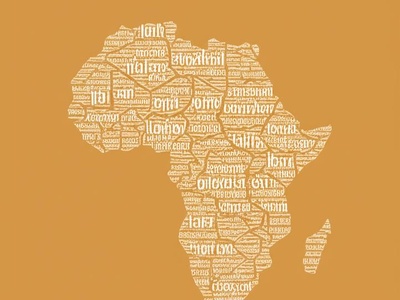
Sar
The language of the Sara people around the city of Sarh, a major administrative center. It is an influential regional language used in education, media, and daily commerce. ISO: `mwm`
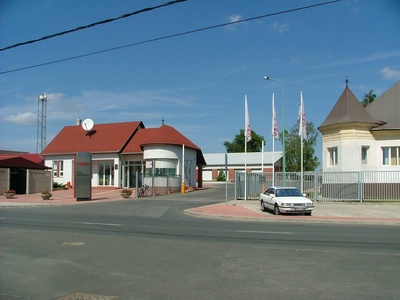
Sokoro
An East Chadic language spoken in a mountainous area. The community is relatively isolated, which has helped preserve the language, though it faces pressure from Chadian Arabic. ISO: `sok`

Somrai
An East Chadic language that is part of a larger dialect cluster. It is endangered, with speakers increasingly using Nancere or Chadian Arabic in daily communication. ISO: `sor`

Surbakhal
A Maban language spoken near the border with Sudan. It is closely related to Masalit but is considered a distinct language. It is vigorous within its community. ISO: `sbj`
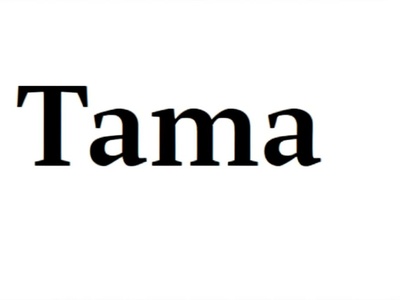
Tama
The language of the Tama people, spoken in eastern Chad and Darfur. It served as the official language of the historical Tama Sultanate and remains a vital part of Tama identity. ISO: `tma`
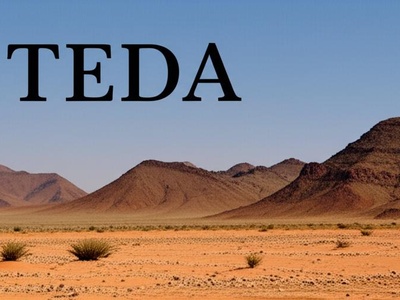
Teda
Spoken by the Teda (Tubu) people in the Tibesti Mountains and across the Sahara. It is a highly conservative Saharan language, reflecting the traditional nomadic lifestyle of its speakers. ISO: `tuq`
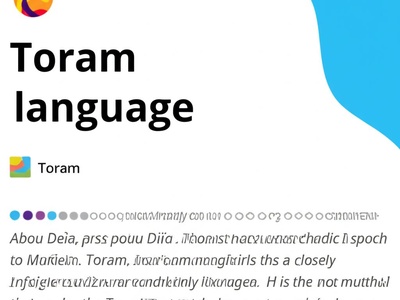
Toram
An East Chadic language spoken south of Abou Deïa. It is closely related to Mubi but is not mutually intelligible. It is the main language of daily life for the Toram people. ISO: `trj`
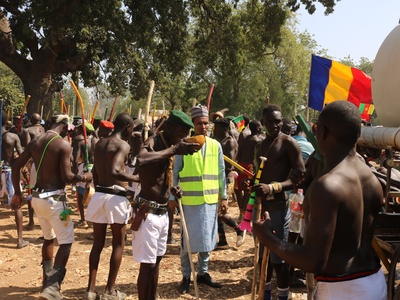
Tupuri
A major Mbum language spoken in the Fianga area of southwestern Chad and in Cameroon. It is a vigorous language with a strong cultural presence, including traditional music and dance. ISO: `tui`
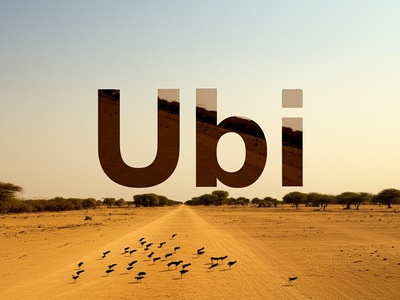
Ubi
A critically endangered East Chadic language, related to Dangaleat. Spoken in just a few villages, only the older generation is fluent, with younger people preferring Chadian Arabic. ISO: `ubi`
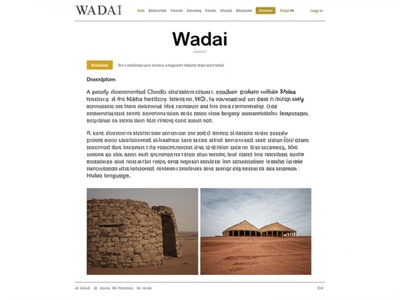
Wadai
A poorly documented Chadic language spoken within Maba territory. It is highly endangered as the community has largely assimilated and shifted to speaking the dominant Maba language. ISO: `wdi`

